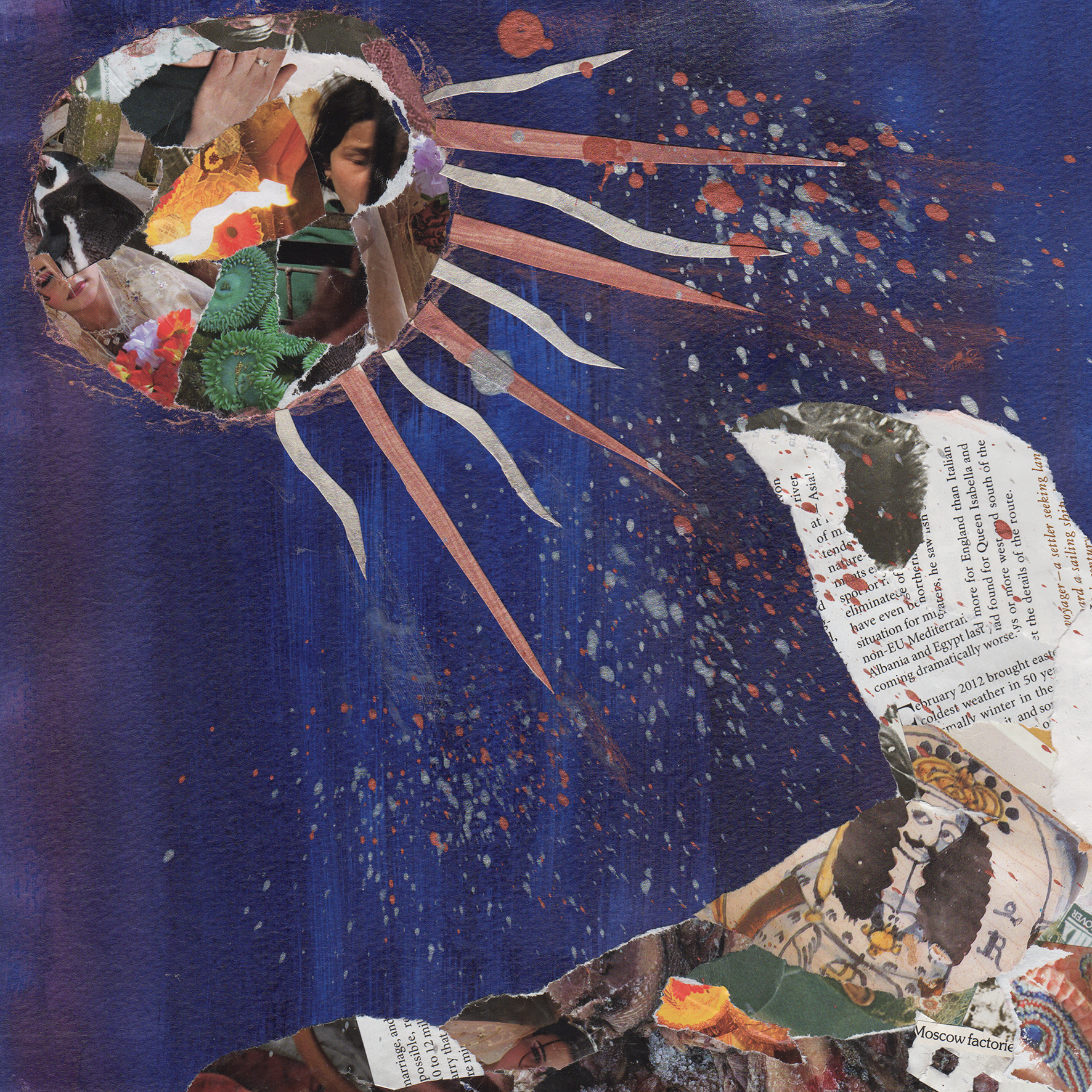 I first encountered Joseph Allred on a massive compilation of American Primitive guitarists that I believe surfaced on the Dying For Bad Music blog sometime last year, but my ears must not have been working that week, as the experience did not leave a strong impression. In my defense, my ears were likely hopelessly numbed by the sheer volume of relatively similar (and often wonderful) artists who have worked in that vein over the years. John Fahey cast a long shadow and inspired a lot of dazzling instrumental performances, but the best compliment one can pay such an iconoclast is to use the American Primitive style as a mere starting point for a distinctive new vision. And if there is one thing Joseph Allred has (besides virtuosity), it is definitely vision, as O Meadowlark is an impressionistic suite of songs that abstractly chronicles the travails and ultimate transfiguration of Allred's alter-ego Poor Faulkner. Of course, there is a long tradition of storytelling among steel-string guitarists, as it adds some welcome depth and color to what could otherwise just be a mere display of instrumental prowess. To his credit, Allred is on an entirely different level in that regard, as his stories are singularly strange and unique ones and he channels them vividly. This is a fascinating release.
I first encountered Joseph Allred on a massive compilation of American Primitive guitarists that I believe surfaced on the Dying For Bad Music blog sometime last year, but my ears must not have been working that week, as the experience did not leave a strong impression. In my defense, my ears were likely hopelessly numbed by the sheer volume of relatively similar (and often wonderful) artists who have worked in that vein over the years. John Fahey cast a long shadow and inspired a lot of dazzling instrumental performances, but the best compliment one can pay such an iconoclast is to use the American Primitive style as a mere starting point for a distinctive new vision. And if there is one thing Joseph Allred has (besides virtuosity), it is definitely vision, as O Meadowlark is an impressionistic suite of songs that abstractly chronicles the travails and ultimate transfiguration of Allred's alter-ego Poor Faulkner. Of course, there is a long tradition of storytelling among steel-string guitarists, as it adds some welcome depth and color to what could otherwise just be a mere display of instrumental prowess. To his credit, Allred is on an entirely different level in that regard, as his stories are singularly strange and unique ones and he channels them vividly. This is a fascinating release.
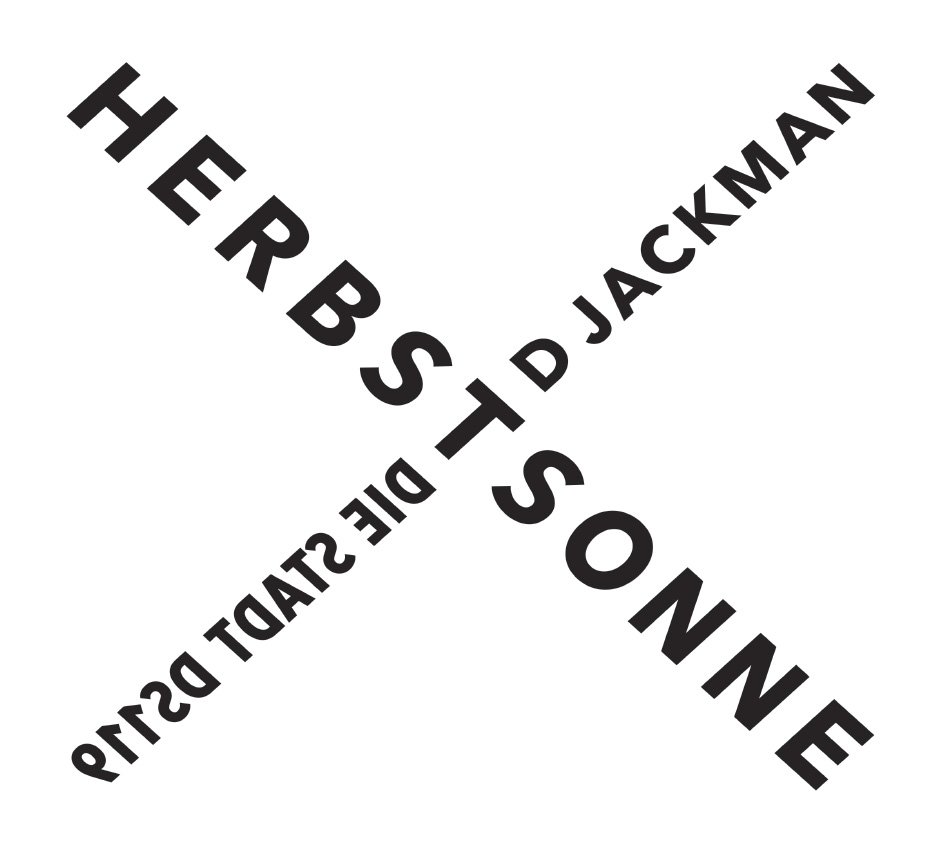 Always enigmatic, the latest work from David Jackman is a single 47 minute piece that, for some reason, has been issued under his own name rather than Organum. I have never been clear as to what determines the name that will go on the record, and this is the first Jackman release since a split 7" (with Organum) in 2005. Additionally, the overall feel of the piece is distinct, but not far removed from the Amen/Sanctus/Omega trilogy from 2006-2007. Deliberately minimalist in arrangement, but with an unquestionable dedication to the finest detail of sounds, it is another work of fascinating beauty by the legendary artist.
Always enigmatic, the latest work from David Jackman is a single 47 minute piece that, for some reason, has been issued under his own name rather than Organum. I have never been clear as to what determines the name that will go on the record, and this is the first Jackman release since a split 7" (with Organum) in 2005. Additionally, the overall feel of the piece is distinct, but not far removed from the Amen/Sanctus/Omega trilogy from 2006-2007. Deliberately minimalist in arrangement, but with an unquestionable dedication to the finest detail of sounds, it is another work of fascinating beauty by the legendary artist.
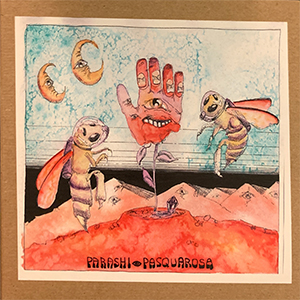 The town of Clifton Park, New York, does not have anything resembling an experimental music scene, other than the basement studio of Mike Griffin. Under the Parashi name, he has been building up an impressive catalog of releases running the gamut from ambient spaciousness to pummeling distortion. These two collaborative releases make it clear how well his personal brand of electronic mangling works alongside another artist as well, and with a contrast from Anthony Pasquarosa's largely guitar-focused work and the darker electronics of Noise Nomads, showcases his versatility.
The town of Clifton Park, New York, does not have anything resembling an experimental music scene, other than the basement studio of Mike Griffin. Under the Parashi name, he has been building up an impressive catalog of releases running the gamut from ambient spaciousness to pummeling distortion. These two collaborative releases make it clear how well his personal brand of electronic mangling works alongside another artist as well, and with a contrast from Anthony Pasquarosa's largely guitar-focused work and the darker electronics of Noise Nomads, showcases his versatility.
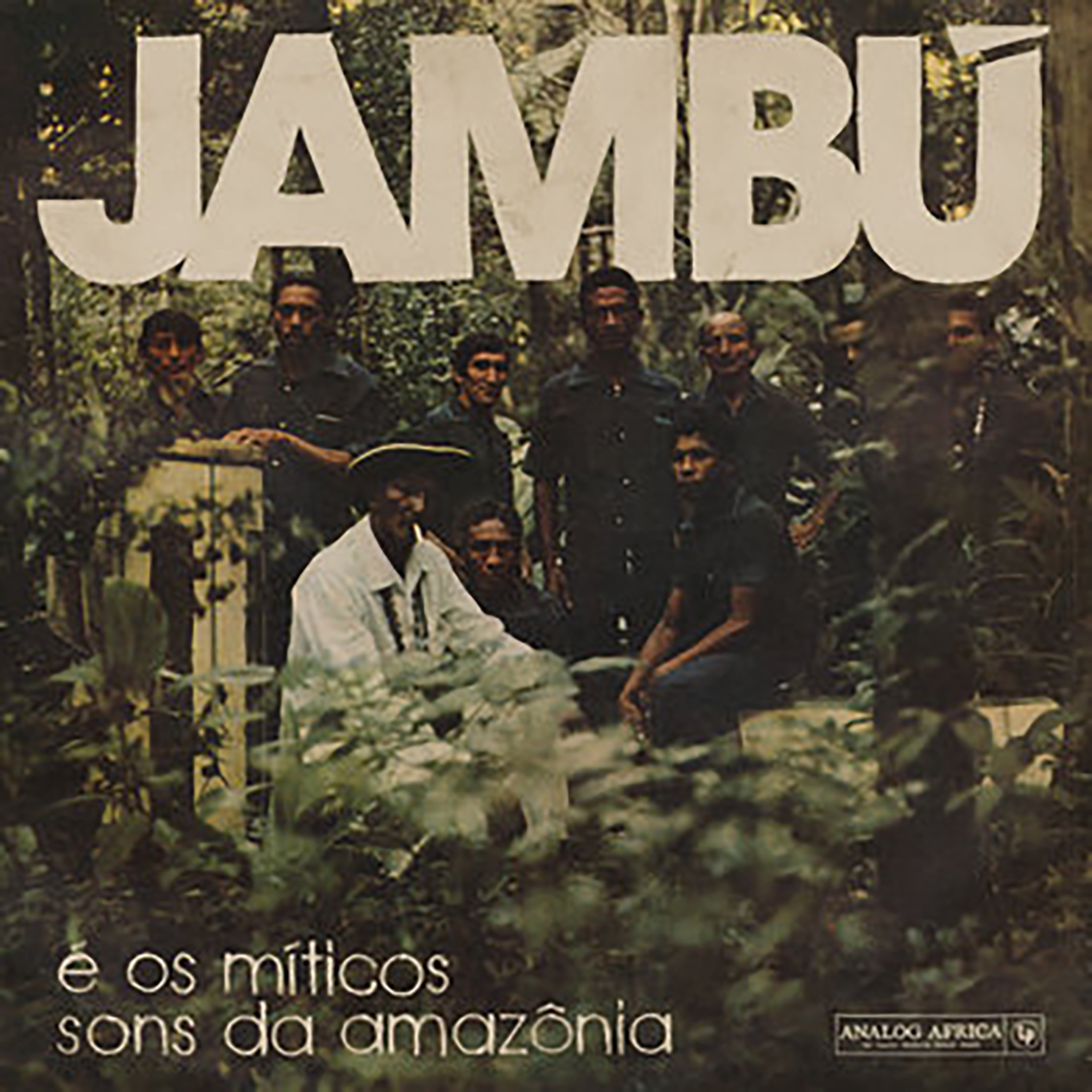 This latest collection from Analog Africa is another detour of sorts, as curators Samy Ben Redjeb and Carlo Xavier headed to Brazil for a very deep dive into the underheard musical treasures of Belém. The genres covered (Carimbó, Samba-De-Cacete, Siriá, Bois-Bumbás and bambiá) were all entirely new to me, but I felt better when I learned that they were all fairly new to Redjeb as well. Characteristically, however, he was drawn to the Amazon-bordering coastal city due to its unique collision of cultures and therein lies the African connection: Belém was a crucial port for the sugar, coffee, and rubber trades, which resulted in plenty of West African slaves being sent to the region. Those that managed to escape often fled to outlaw settlements called quilombos where African religions and cultural traditions established a tenacious foothold (including those of Redjeb's beloved Benin). Naturally, those cultures evolved into something unique over the years and the best pieces on Jambú capture quite a wonderful marriage of relentlessly propulsive Brazilian grooves and African rhythms (though the latter is not quite as prominent as I would have expected).
This latest collection from Analog Africa is another detour of sorts, as curators Samy Ben Redjeb and Carlo Xavier headed to Brazil for a very deep dive into the underheard musical treasures of Belém. The genres covered (Carimbó, Samba-De-Cacete, Siriá, Bois-Bumbás and bambiá) were all entirely new to me, but I felt better when I learned that they were all fairly new to Redjeb as well. Characteristically, however, he was drawn to the Amazon-bordering coastal city due to its unique collision of cultures and therein lies the African connection: Belém was a crucial port for the sugar, coffee, and rubber trades, which resulted in plenty of West African slaves being sent to the region. Those that managed to escape often fled to outlaw settlements called quilombos where African religions and cultural traditions established a tenacious foothold (including those of Redjeb's beloved Benin). Naturally, those cultures evolved into something unique over the years and the best pieces on Jambú capture quite a wonderful marriage of relentlessly propulsive Brazilian grooves and African rhythms (though the latter is not quite as prominent as I would have expected).
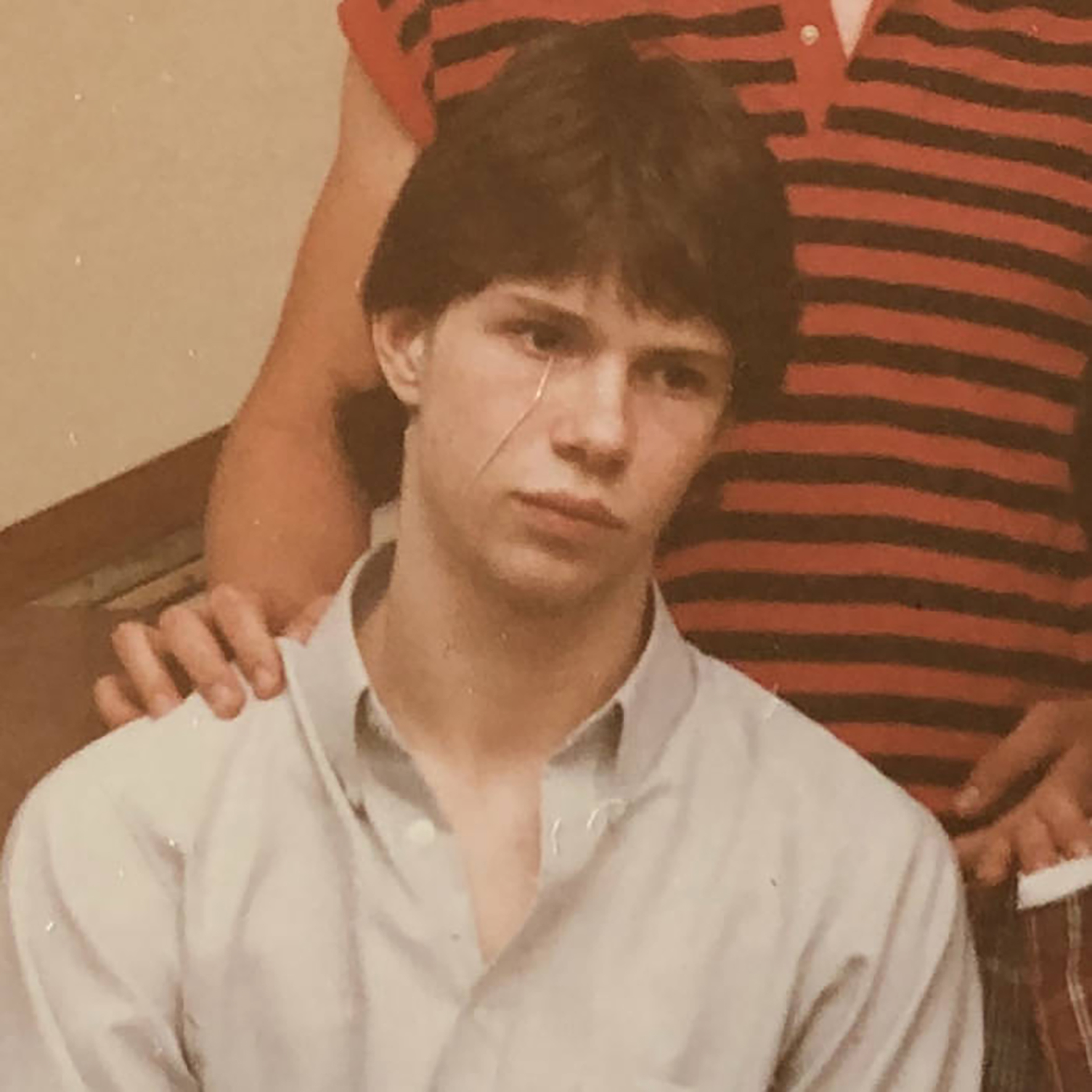 As befits the curious and unpredictable arc of His Name is Alive, this first installment of a planned trilogy of Warren Defever's adolescent/teenage tape experiments is a truly wonderful and bewildering revelation. Defever must have been one hell of a precocious 10-year-old back in 1979, as his formula of combining field recordings, copious reverb, and samples of records played at the wrong speeds would have easily been strong enough to build an entire career on–I daresay it was a positively Basinski-esque flash of inspiration. Instead, however, Defever opted to move onto more song-based work and this side of his artistry was relegated to some dusty, long-forgotten boxes, which I suppose worked out quite well too. These lovely, haunted sounding soundscapes would have made quite a huge impression if they had been released during the band's 4AD heyday though: the liner notes amusingly suggest that Defever accidentally invented shoegaze while trying to make new age music. Fortunately, these elegantly blurred miniatures still sound absolutely wonderful today, even if the window has passed in which Defever might have been hailed as one of the most important and influential voices in ambient music (or as a proto-Slowdive shoegaze savant).
As befits the curious and unpredictable arc of His Name is Alive, this first installment of a planned trilogy of Warren Defever's adolescent/teenage tape experiments is a truly wonderful and bewildering revelation. Defever must have been one hell of a precocious 10-year-old back in 1979, as his formula of combining field recordings, copious reverb, and samples of records played at the wrong speeds would have easily been strong enough to build an entire career on–I daresay it was a positively Basinski-esque flash of inspiration. Instead, however, Defever opted to move onto more song-based work and this side of his artistry was relegated to some dusty, long-forgotten boxes, which I suppose worked out quite well too. These lovely, haunted sounding soundscapes would have made quite a huge impression if they had been released during the band's 4AD heyday though: the liner notes amusingly suggest that Defever accidentally invented shoegaze while trying to make new age music. Fortunately, these elegantly blurred miniatures still sound absolutely wonderful today, even if the window has passed in which Defever might have been hailed as one of the most important and influential voices in ambient music (or as a proto-Slowdive shoegaze savant).
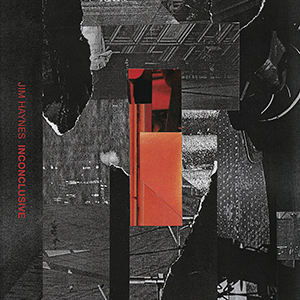 Compared to the last two albums I have heard from the always-fascinating Jim Haynes, this new tape features him pushing his penchant for rusting, decaying sounds into a slightly new direction. Always one for tactile, crackling sounds and unsettling noises, Throttle and Calibration and Flammable Materials From Foreign Lands were colder, sparser affairs that heavily featured field recordings and a distinct sense of isolation. Inconclusive, however, is a more commanding and forceful cassette. Besides featuring Haynes back into chaotic, harsher noise territories, it also shows him working in more rhythmic, vaguely industrial and power electronics sounding contexts as well.
Compared to the last two albums I have heard from the always-fascinating Jim Haynes, this new tape features him pushing his penchant for rusting, decaying sounds into a slightly new direction. Always one for tactile, crackling sounds and unsettling noises, Throttle and Calibration and Flammable Materials From Foreign Lands were colder, sparser affairs that heavily featured field recordings and a distinct sense of isolation. Inconclusive, however, is a more commanding and forceful cassette. Besides featuring Haynes back into chaotic, harsher noise territories, it also shows him working in more rhythmic, vaguely industrial and power electronics sounding contexts as well.
 It has been a hell of a long time since Nurse With Wound last surfaced with a proper new album on United Dairies, but 2019 is looking to be an uncharacteristically prolific year with the epic Trippin' Music looming on the horizon. In the meantime, however, there is the endearingly strange The Vursiflenze Mismantler, which pairs Steven Stapleton and Andrew Liles with Australian vocal artist James Worse. It is very hard to imagine an artist more attuned to NWW's surrealist whimsy than Worse, as he is best known for his poetry crafted almost entirely from made-up and nonsensical words. Louis Carroll's "The Jabberwocky" is the obvious and unavoidable reference point with Worse's "Worsicles," but his poetry only escapes the gleeful mutilations of Stapleton and Liles on one piece here. The rest of the album is a Dada-esque collage of chopped, digitized, and gurgling vocal sounds that occasionally coheres into some unlikely and delightful grooves.
It has been a hell of a long time since Nurse With Wound last surfaced with a proper new album on United Dairies, but 2019 is looking to be an uncharacteristically prolific year with the epic Trippin' Music looming on the horizon. In the meantime, however, there is the endearingly strange The Vursiflenze Mismantler, which pairs Steven Stapleton and Andrew Liles with Australian vocal artist James Worse. It is very hard to imagine an artist more attuned to NWW's surrealist whimsy than Worse, as he is best known for his poetry crafted almost entirely from made-up and nonsensical words. Louis Carroll's "The Jabberwocky" is the obvious and unavoidable reference point with Worse's "Worsicles," but his poetry only escapes the gleeful mutilations of Stapleton and Liles on one piece here. The rest of the album is a Dada-esque collage of chopped, digitized, and gurgling vocal sounds that occasionally coheres into some unlikely and delightful grooves.
 Caleb Mulkerin and Colleen Kinsella’s Big Blood project has consistently been one of the most delightfully unique and life-affirming bands in the American underground over the last decade or so. Admittedly, their major releases have been increasingly prickly, weird, and experimental in recent years, which likely explains why the duo are not nearly as appreciated as they should be: the current era is definitely not the easiest entry point for the curious. Prior to the run of ambitious concept albums that kicked off with 2013's Radio Valkyrie, however, the duo self-released quite a transcendent run of brilliant songs on homemade CD-Rs. It is not an exaggeration to say that the ramshackle back porch psychedelia of those early years yielded some of the most beautiful songwriting that my ears have ever heard. This 2006 release is where that hot streak first began, preceding Fire on Fire's brief but wonderful lifespan on Young God Records by a year. How they managed to be the driving creative force between two great bands at once is beyond me, but Mulkerin and Kinsella managed to churn out at least four stone-cold masterpieces in the span of two years and this was the first of them.
Caleb Mulkerin and Colleen Kinsella’s Big Blood project has consistently been one of the most delightfully unique and life-affirming bands in the American underground over the last decade or so. Admittedly, their major releases have been increasingly prickly, weird, and experimental in recent years, which likely explains why the duo are not nearly as appreciated as they should be: the current era is definitely not the easiest entry point for the curious. Prior to the run of ambitious concept albums that kicked off with 2013's Radio Valkyrie, however, the duo self-released quite a transcendent run of brilliant songs on homemade CD-Rs. It is not an exaggeration to say that the ramshackle back porch psychedelia of those early years yielded some of the most beautiful songwriting that my ears have ever heard. This 2006 release is where that hot streak first began, preceding Fire on Fire's brief but wonderful lifespan on Young God Records by a year. How they managed to be the driving creative force between two great bands at once is beyond me, but Mulkerin and Kinsella managed to churn out at least four stone-cold masterpieces in the span of two years and this was the first of them.
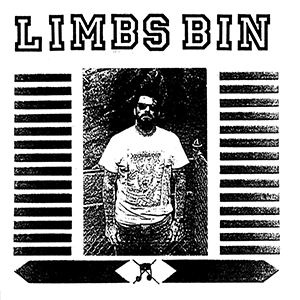 Gleefully jumping between noise, grindcore, power electronics, and just plain bizarreness, Josh Landes’s Limbs Bin is the premier noise artist of Pittsfield, Massachusetts, and with releases such as this 7" it is not hard to see why. The components of Blast Anthemics for a New Generation of Ecstatic Youth are pretty standard: feedback electronics, drum machine blast beats, and a healthy helping of yelling. It is the way Landes mixes these together, however, along with an appropriate amount of silliness, which makes this single stand out.
Gleefully jumping between noise, grindcore, power electronics, and just plain bizarreness, Josh Landes’s Limbs Bin is the premier noise artist of Pittsfield, Massachusetts, and with releases such as this 7" it is not hard to see why. The components of Blast Anthemics for a New Generation of Ecstatic Youth are pretty standard: feedback electronics, drum machine blast beats, and a healthy helping of yelling. It is the way Landes mixes these together, however, along with an appropriate amount of silliness, which makes this single stand out.
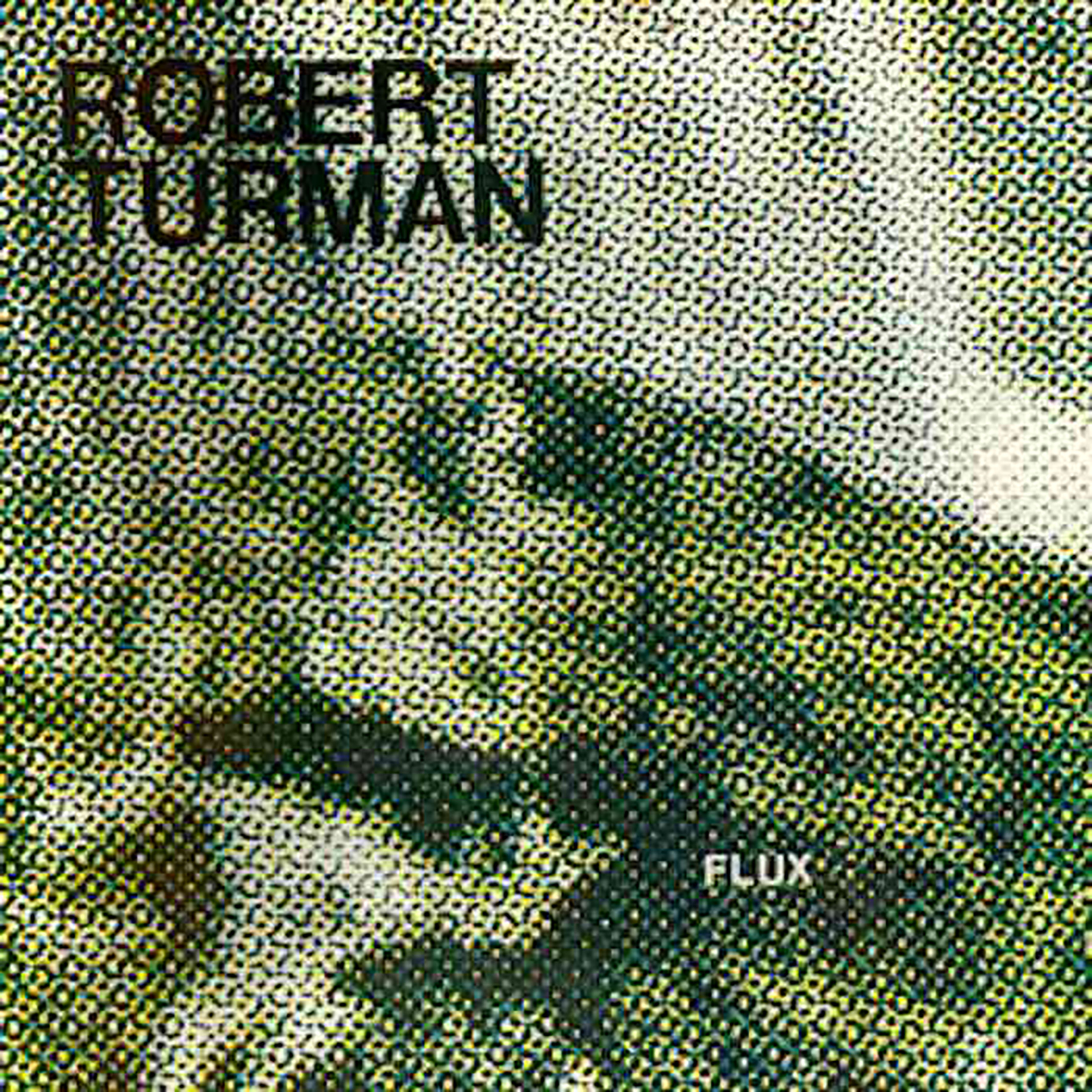 Recently reissued for the second time on Spectrum Spools, Robert Turman's Flux is widely regarded to be one of the most unique and essential releases to emerge from the ‘80s cassette underground. Originally self-released back in 1981, Flux was Turman's solo debut after a brief tenure in NON's earliest incarnation, but the only common ground the two projects share is a general fondness for tape loops and vintage exotica. Nearly four decades later, Flux's tender, bleary, and hiss-soaked minimalism no longer feels particularly radical, but the passing of time has done nothing to diminish the album's simple and gently hallucinatory beauty. Flux casts quite a lovely and hypnotic spell, conjuring an aesthetic that lies somewhere between Andrew Chalk and a dream set in an ancient Buddhist temple.
Recently reissued for the second time on Spectrum Spools, Robert Turman's Flux is widely regarded to be one of the most unique and essential releases to emerge from the ‘80s cassette underground. Originally self-released back in 1981, Flux was Turman's solo debut after a brief tenure in NON's earliest incarnation, but the only common ground the two projects share is a general fondness for tape loops and vintage exotica. Nearly four decades later, Flux's tender, bleary, and hiss-soaked minimalism no longer feels particularly radical, but the passing of time has done nothing to diminish the album's simple and gently hallucinatory beauty. Flux casts quite a lovely and hypnotic spell, conjuring an aesthetic that lies somewhere between Andrew Chalk and a dream set in an ancient Buddhist temple.
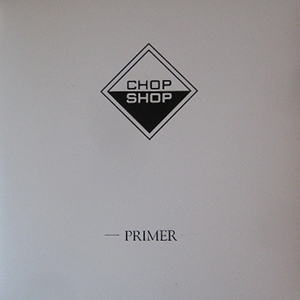 Active for over 30 years but with a relatively small discography, Scott Konzelmann's Chop Shop has made a career of releasing only the utmost quality works, although they have largely been in unconventional formats and extremely limited editions. Primer collects two of his earliest works, 1987's Power Pieces Positive Force and 1989's Scraps, albeit in slightly modified forms, and gives them the deluxe treatment, not only resulting in a higher profile for the releases (since vinyl is the most important format these days it would seem), but also giving wider exposure to these important, extremely difficult to find early works.
Active for over 30 years but with a relatively small discography, Scott Konzelmann's Chop Shop has made a career of releasing only the utmost quality works, although they have largely been in unconventional formats and extremely limited editions. Primer collects two of his earliest works, 1987's Power Pieces Positive Force and 1989's Scraps, albeit in slightly modified forms, and gives them the deluxe treatment, not only resulting in a higher profile for the releases (since vinyl is the most important format these days it would seem), but also giving wider exposure to these important, extremely difficult to find early works.
 Consisting of three distinct artists whose other projects are all rather different, Junkie Flamingos is not quite what I would call a supergroup, but instead a three part collaboration that reflects the artists' distinct styles, but in a singular presentation. Featuring Alice Kundalini's electronics and vocals (of death industrial project She Spread Sorrow) and music from electronic artist Luca Sigurt√° and Daniele Delogu from the folk tinged Barbarian Pipe Band. The sound of Lemegeton Party makes sense, with layered, noisy synths, processed vocals, and dramatic bombast, and it all comes together as a challenging and fragmented record, but with a catchy, pleasant sounding undercurrent.
Consisting of three distinct artists whose other projects are all rather different, Junkie Flamingos is not quite what I would call a supergroup, but instead a three part collaboration that reflects the artists' distinct styles, but in a singular presentation. Featuring Alice Kundalini's electronics and vocals (of death industrial project She Spread Sorrow) and music from electronic artist Luca Sigurt√° and Daniele Delogu from the folk tinged Barbarian Pipe Band. The sound of Lemegeton Party makes sense, with layered, noisy synths, processed vocals, and dramatic bombast, and it all comes together as a challenging and fragmented record, but with a catchy, pleasant sounding undercurrent.
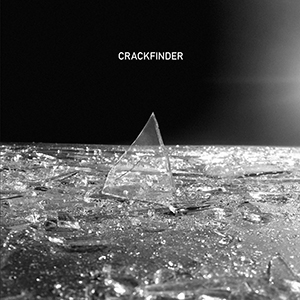 Recorded live in 2016 under the name Sono Genera, the trio of Jérôme Noetinger (tape, electronics), Robert Piotrowicz (synth), and Anna Zaradny (saxophone, computer) are all prolific artists on their own, but each work in distinctly different styles under that nebulous umbrella of experimental music. Piotrowicz has mostly focused on modular synths during his career; Noetinger’s body of work is multidisciplinary and heavily rooted in tape manipulation, and Zaradny is a composer whose primary instrument is the computer and occasionally horns. With that in mind, it is unsurprising that the core elements of Crackfinder sound as if they are drawn from all over the place from an instrumental standpoint, but these distinct styles end up sitting alongside each other very nicely as a cohesive piece of music.
Recorded live in 2016 under the name Sono Genera, the trio of Jérôme Noetinger (tape, electronics), Robert Piotrowicz (synth), and Anna Zaradny (saxophone, computer) are all prolific artists on their own, but each work in distinctly different styles under that nebulous umbrella of experimental music. Piotrowicz has mostly focused on modular synths during his career; Noetinger’s body of work is multidisciplinary and heavily rooted in tape manipulation, and Zaradny is a composer whose primary instrument is the computer and occasionally horns. With that in mind, it is unsurprising that the core elements of Crackfinder sound as if they are drawn from all over the place from an instrumental standpoint, but these distinct styles end up sitting alongside each other very nicely as a cohesive piece of music.
 This latest project from FaUSt guitarist/Ulan Bator founder Amaury Cambuzat has regrettably been under my radar for the last several months, but AmOrtH recently caught my attention by virtue of its Dirter Promotions imprimatur. Prior to this latest release, Cambuzat had been documenting his amazing solo guitar "cathedral sessions" throughout the year with a series of videos that culminated with April's Rec.Requiem album (released on Italy's Dio Drone). If I had heard Rec.Requiem first, i am sure it would have floored me, as Cambuzat is an almost supernaturally brilliant drone artist. Instead, I encountered this one, which worked out quite well: AmOrtH is somehow even better than its predecessor. I have not heard drone as mesmerizingly heavy and ritualistic as this since I was blindsided by Natural Snow Buildings a decade ago. AmOrtH is an absolute monster of an album.
This latest project from FaUSt guitarist/Ulan Bator founder Amaury Cambuzat has regrettably been under my radar for the last several months, but AmOrtH recently caught my attention by virtue of its Dirter Promotions imprimatur. Prior to this latest release, Cambuzat had been documenting his amazing solo guitar "cathedral sessions" throughout the year with a series of videos that culminated with April's Rec.Requiem album (released on Italy's Dio Drone). If I had heard Rec.Requiem first, i am sure it would have floored me, as Cambuzat is an almost supernaturally brilliant drone artist. Instead, I encountered this one, which worked out quite well: AmOrtH is somehow even better than its predecessor. I have not heard drone as mesmerizingly heavy and ritualistic as this since I was blindsided by Natural Snow Buildings a decade ago. AmOrtH is an absolute monster of an album.
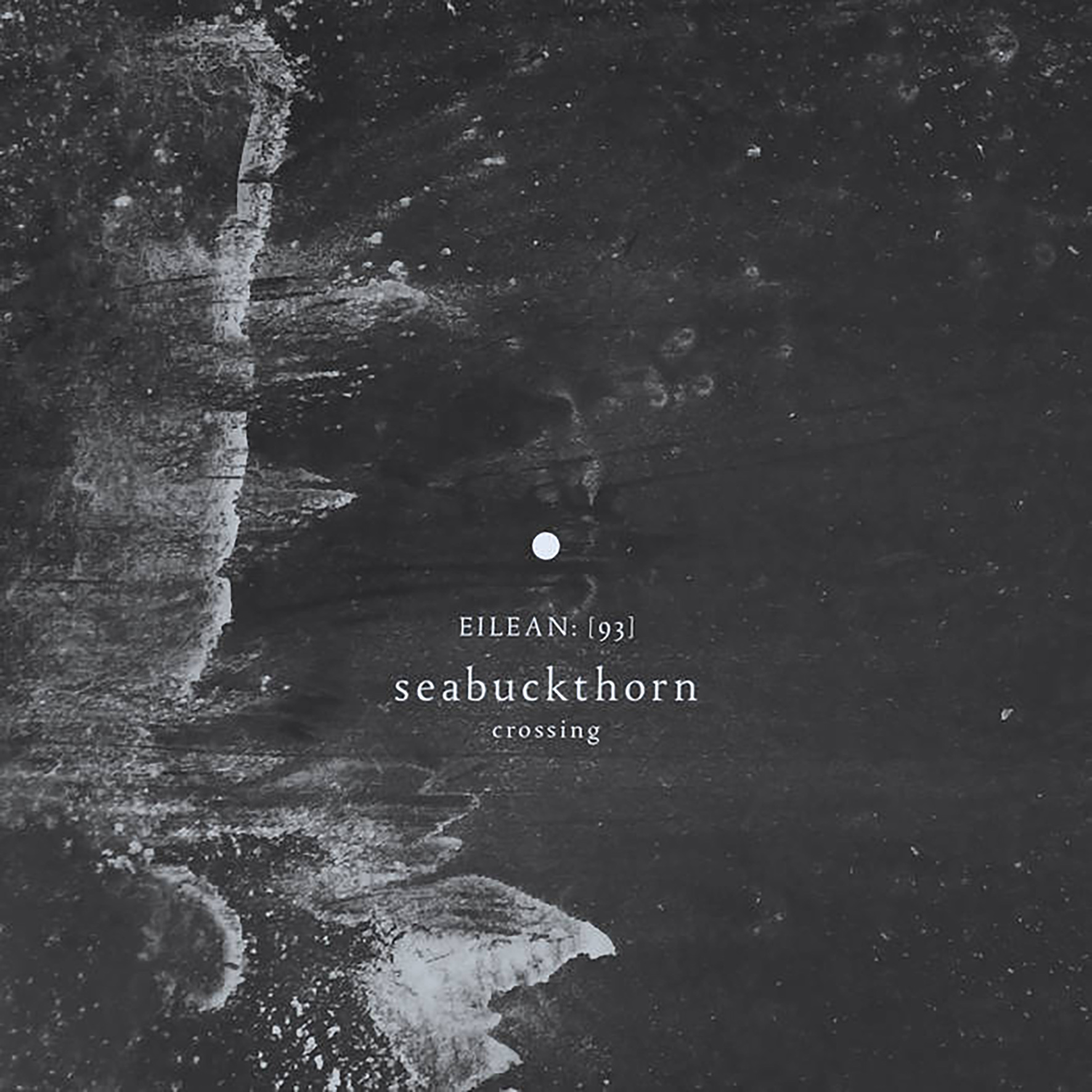 English guitarist Andy Cartwright's A House With Too Much Fire was one of the most striking and underappreciated albums of 2018, beautifully evoking a timeless and haunted-sounding strain of Americana. For his follow-up, the expectant father arguably allows a bit more light to creep into his vision, but plunges still deeper into the more experimental and atmospheric tendencies that made Too Much Fire so wonderful. In fact, Crossing sheds many of the more overt folk trappings of its predecessor, largely replacing the banjos and acoustic guitars with drones from a bowed resonator guitar (though the "Haunted Americana" sensibility remains very firmly in place). Despite its strong emphasis on mood and sustained tones, it would be a mistake to characterize Crossing as anything like a conventional drone album though, as Cartwright's closest kindred spirit at this stage of his career seems to be Richard Skelton. It does not quite resemble the actual Richard Skelton though–instead Crossing often approximates an alternate Skelton who veered towards increasingly warm, intimate, and bittersweet soundscapes rather than embracing the deeper themes and elemental power of the natural world. I certainly have ample room in my heart for both directions, especially when executed this masterfully.
English guitarist Andy Cartwright's A House With Too Much Fire was one of the most striking and underappreciated albums of 2018, beautifully evoking a timeless and haunted-sounding strain of Americana. For his follow-up, the expectant father arguably allows a bit more light to creep into his vision, but plunges still deeper into the more experimental and atmospheric tendencies that made Too Much Fire so wonderful. In fact, Crossing sheds many of the more overt folk trappings of its predecessor, largely replacing the banjos and acoustic guitars with drones from a bowed resonator guitar (though the "Haunted Americana" sensibility remains very firmly in place). Despite its strong emphasis on mood and sustained tones, it would be a mistake to characterize Crossing as anything like a conventional drone album though, as Cartwright's closest kindred spirit at this stage of his career seems to be Richard Skelton. It does not quite resemble the actual Richard Skelton though–instead Crossing often approximates an alternate Skelton who veered towards increasingly warm, intimate, and bittersweet soundscapes rather than embracing the deeper themes and elemental power of the natural world. I certainly have ample room in my heart for both directions, especially when executed this masterfully.
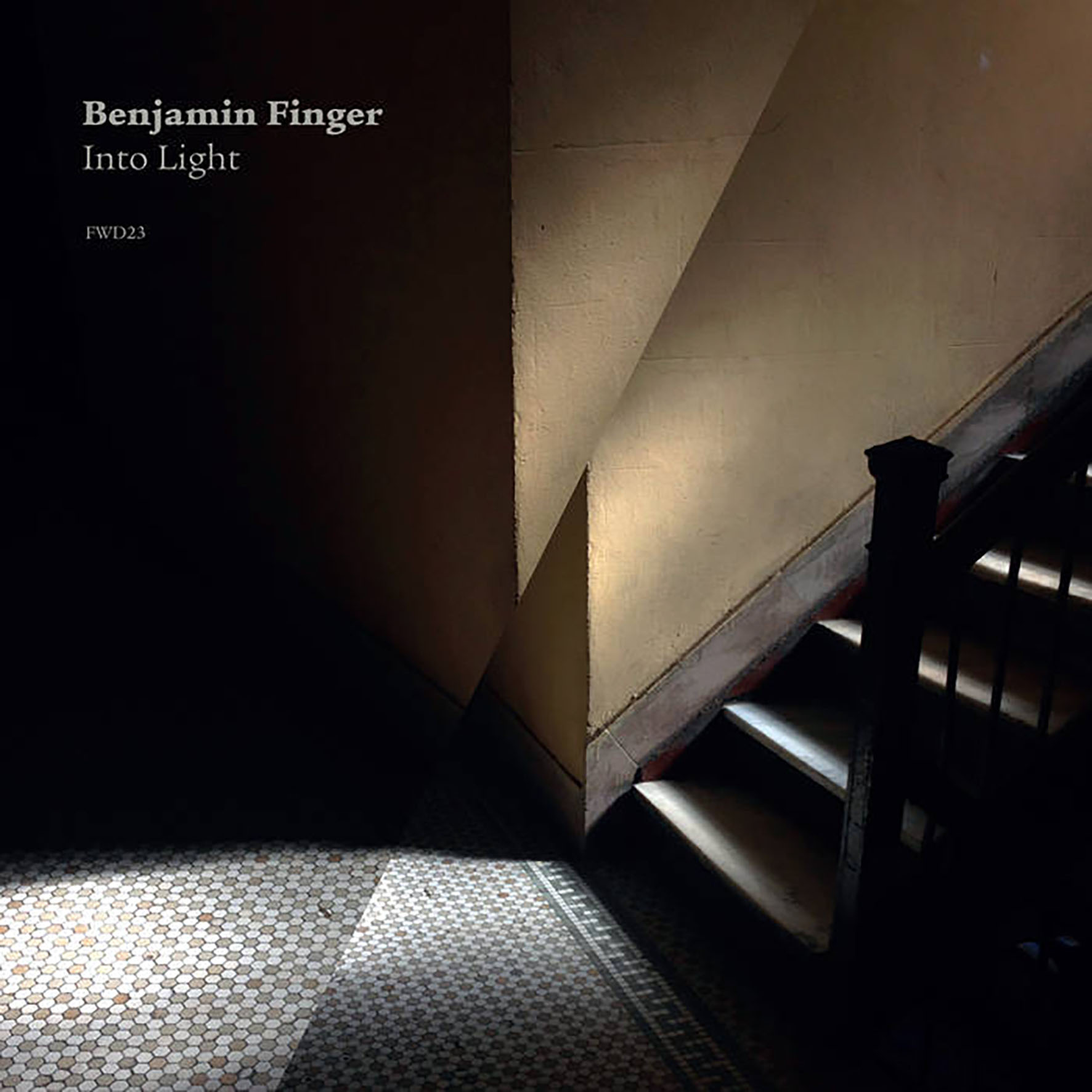 Keeping up with Benjamin Finger’s tireless work ethic in recent years has been an increasing challenge for me, but it has been a worthwhile one, as he manages to maintain a consistently high level of quality and sometimes surprises me with an especially inspired detour or two. Also, his trail of recent releases is not unlike a fun scavenger hunt, leading me from one cool small-press label to another. In the case of Into Light, that small-press label is Berlin’s Forwind and the album is a solid example of Finger's warmly hallucinatory dronescape aesthetic. Pleasure-Voltage, on the other hand, falls into the "inspired detour" category, as Finger debuts an unexpectedly muscular trio with avant-garde violinist Mia Zabelka and extreme music super-producer James Plotkin. The latter album, released on another Berlin label (the eclectic and adventurous Karlrecords), is the more significant by virtue of being unlike anything else in Finger’s discography, but both releases have their share of bright moments.
Keeping up with Benjamin Finger’s tireless work ethic in recent years has been an increasing challenge for me, but it has been a worthwhile one, as he manages to maintain a consistently high level of quality and sometimes surprises me with an especially inspired detour or two. Also, his trail of recent releases is not unlike a fun scavenger hunt, leading me from one cool small-press label to another. In the case of Into Light, that small-press label is Berlin’s Forwind and the album is a solid example of Finger's warmly hallucinatory dronescape aesthetic. Pleasure-Voltage, on the other hand, falls into the "inspired detour" category, as Finger debuts an unexpectedly muscular trio with avant-garde violinist Mia Zabelka and extreme music super-producer James Plotkin. The latter album, released on another Berlin label (the eclectic and adventurous Karlrecords), is the more significant by virtue of being unlike anything else in Finger’s discography, but both releases have their share of bright moments.
 This unusual reissue quietly entered the world last December when everyone was frantically obsessing over the year-end lists and features, so it did not get nearly the attention it deserved. It is certainly an odd release for a couple of reasons, but the most obvious one is that a 35-year-old album of bird songs was resurrected by a record label best known for avant-garde and experimental music. The other is that Birds of Venezuela was just one of over one hundred albums recorded and released by French ornithologist Jean-Claude Roché. That naturally begged the questions "What makes this album the special one?" and "Who exactly is this for?". As it turns out, the liner notes by David Toop answer the former and the album itself decisively answered the latter: this album is for me because it is amazing. In fact, Toop actually started planning a trip to the Amazon soon after hearing this Birds of Venezuela and I probably would have done the same, as a strong case could be made that the most texturally and melodically compelling music scene of the mid-‘70s was the Venezuelan rain forests.
This unusual reissue quietly entered the world last December when everyone was frantically obsessing over the year-end lists and features, so it did not get nearly the attention it deserved. It is certainly an odd release for a couple of reasons, but the most obvious one is that a 35-year-old album of bird songs was resurrected by a record label best known for avant-garde and experimental music. The other is that Birds of Venezuela was just one of over one hundred albums recorded and released by French ornithologist Jean-Claude Roché. That naturally begged the questions "What makes this album the special one?" and "Who exactly is this for?". As it turns out, the liner notes by David Toop answer the former and the album itself decisively answered the latter: this album is for me because it is amazing. In fact, Toop actually started planning a trip to the Amazon soon after hearing this Birds of Venezuela and I probably would have done the same, as a strong case could be made that the most texturally and melodically compelling music scene of the mid-‘70s was the Venezuelan rain forests.
 Plantasia has become a well-known record despite a limited initial 1976 release to anyone buying a houseplant from the Mother Earth store in Los Angeles. This was music for plant owners to create an environment of optimal growth - simple haunting melodies composed on a moog.
Plantasia has become a well-known record despite a limited initial 1976 release to anyone buying a houseplant from the Mother Earth store in Los Angeles. This was music for plant owners to create an environment of optimal growth - simple haunting melodies composed on a moog.
 Each new Richard Skelton release is a bit of a surprise these days, as his aesthetic is in a permanent state of flux shaped by where he is living and what he is thinking about at any given time. For the most part, his more divergent and experimental forays tend to surface as digital-only releases, but this physical release explores the least expected direction of all: a return to the more melodic, song-based aesthetic of his classic Type LPs from a decade ago. Obviously, Skelton is quite a different artist now than he was back then, so Border Ballads not a return so much as it is a very different vision ("telluric, grounded, earthen") rooted in a semi-familiar structure. Given that Landings and Marking Time were the Skelton albums that I first fell in love with, it is very hard to maintain any semblance of objectivity with this long-delayed sequel (of sorts). It feels like Border Ballads recaptures the transcendent magic of its predecessors only fitfully though, as its deep melancholy feels more like a somber, earthbound elegy than an ecstatic catharsis.
Each new Richard Skelton release is a bit of a surprise these days, as his aesthetic is in a permanent state of flux shaped by where he is living and what he is thinking about at any given time. For the most part, his more divergent and experimental forays tend to surface as digital-only releases, but this physical release explores the least expected direction of all: a return to the more melodic, song-based aesthetic of his classic Type LPs from a decade ago. Obviously, Skelton is quite a different artist now than he was back then, so Border Ballads not a return so much as it is a very different vision ("telluric, grounded, earthen") rooted in a semi-familiar structure. Given that Landings and Marking Time were the Skelton albums that I first fell in love with, it is very hard to maintain any semblance of objectivity with this long-delayed sequel (of sorts). It feels like Border Ballads recaptures the transcendent magic of its predecessors only fitfully though, as its deep melancholy feels more like a somber, earthbound elegy than an ecstatic catharsis.
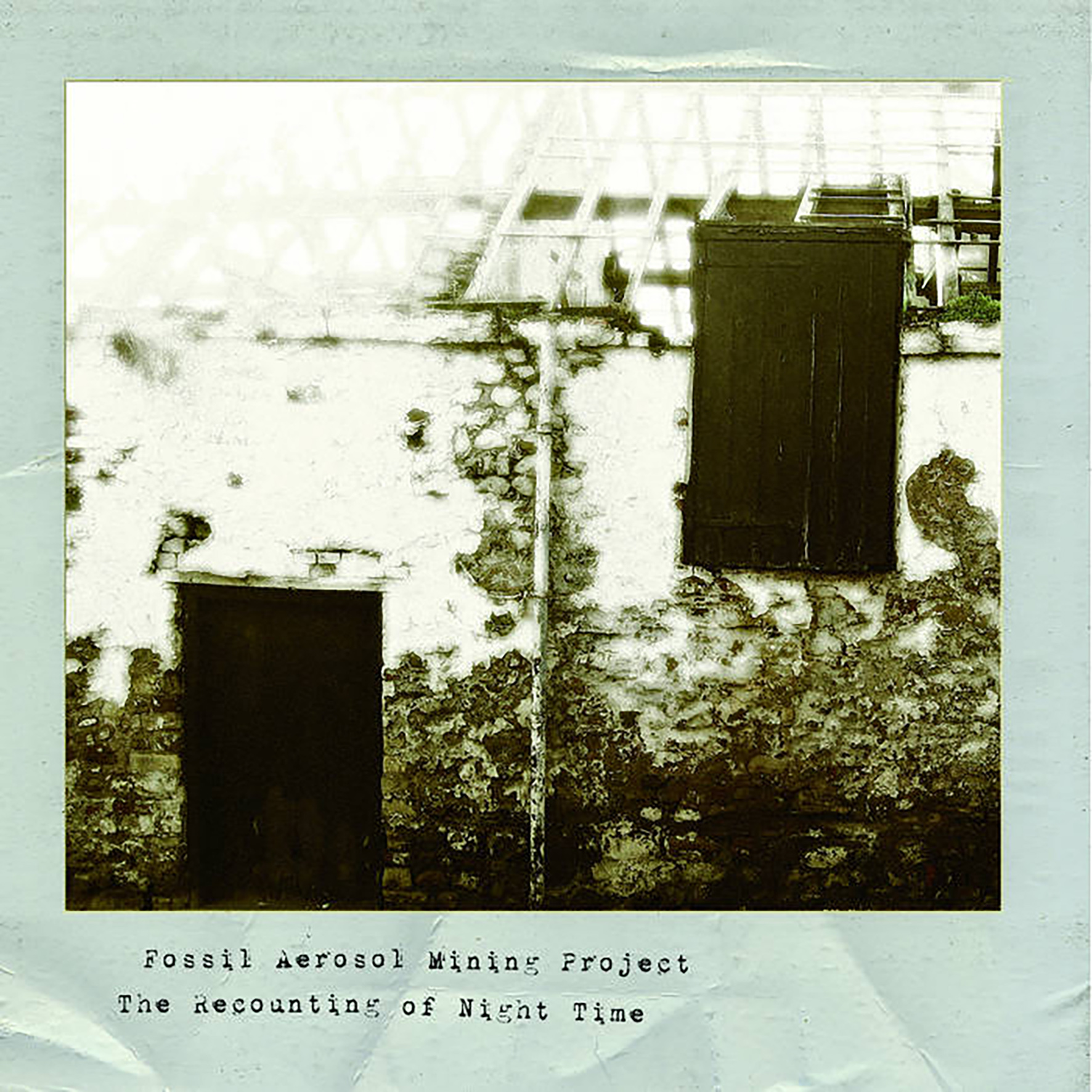 This inscrutable cabal of post-industrial scavengers continues to burrow into our murky cultural subconscious with a pair of minor new releases. Characteristically, both albums are heavily conceptual and mystery-shrouded, but The Recounting of Night Time at least volunteers that it "focuses principally on a certain piece of German gothic cinema made during the late 1970s." That certainly seems to suggest that a badly worn VHS of Werner Herzog's Nosferatu is at the heart of the sounds, but Fossil Aerosol Mining Project are (as always) far more interested in what time has done to the physical media than than whatever that media's original intended content was. About the superior Archeological Testing in the Land of Monkeys, even less is revealed ("A fatigued response to reminders of a cyclical past, surprisingly exaggerated in the years of the rooster and the dog"). Both releases offer their flashes of inspiration, but it is the digital-only and conceptually vague Archeological Testing that unexpectedly feels like some of the collective's finest work to date.
This inscrutable cabal of post-industrial scavengers continues to burrow into our murky cultural subconscious with a pair of minor new releases. Characteristically, both albums are heavily conceptual and mystery-shrouded, but The Recounting of Night Time at least volunteers that it "focuses principally on a certain piece of German gothic cinema made during the late 1970s." That certainly seems to suggest that a badly worn VHS of Werner Herzog's Nosferatu is at the heart of the sounds, but Fossil Aerosol Mining Project are (as always) far more interested in what time has done to the physical media than than whatever that media's original intended content was. About the superior Archeological Testing in the Land of Monkeys, even less is revealed ("A fatigued response to reminders of a cyclical past, surprisingly exaggerated in the years of the rooster and the dog"). Both releases offer their flashes of inspiration, but it is the digital-only and conceptually vague Archeological Testing that unexpectedly feels like some of the collective's finest work to date.



